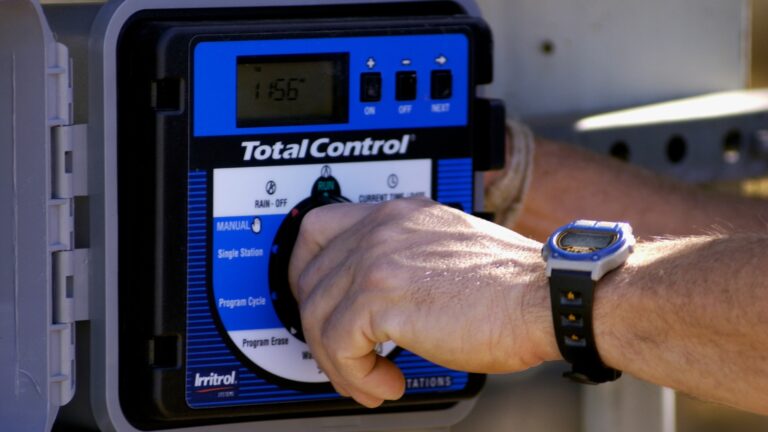Testing showing higher level of PFAS contamination in water source has the Collinsville water department recommending additional steps – KMOV.com

Report on PFAS Water Contamination in Collinsville, Illinois and its Relation to Sustainable Development Goals
Executive Summary
The City of Collinsville, Illinois, is facing a significant environmental and public health challenge due to the contamination of its primary water source, an underground aquifer, with Per- and Polyfluoroalkyl Substances (PFAS). Recent testing has revealed that PFAS levels have surpassed the removal capacity of the current water treatment facility. This situation directly impacts the community’s progress towards key United Nations Sustainable Development Goals (SDGs), particularly SDG 6 (Clean Water and Sanitation) and SDG 3 (Good Health and Well-being). In response, the city has issued a public health advisory recommending at-the-tap water filtration for residents while initiating a long-term infrastructure project to address the contamination at its source, aiming for completion by 2029.
Analysis of the Contamination Event
Detection and Escalation of PFAS Levels
The City of Collinsville was identified as one of approximately 50 Illinois community water systems with elevated levels of PFAS, prompting an initial notification to residents. Subsequent testing during the summer revealed a significant increase in the concentration of these “forever chemicals” in the raw water drawn from the aquifer. This escalation has rendered the existing water treatment processes, established in 2019 before federal PFAS standards were finalized, insufficient for complete removal. Consequently, detectable levels of PFAS are now present in the finished tap water supplied to approximately 27,000 customers.
Impact on Sustainable Development Goals (SDGs)
- SDG 6: Clean Water and Sanitation: The presence of PFAS in the municipal water supply represents a direct failure to meet Target 6.1, which aims to achieve universal and equitable access to safe and affordable drinking water for all. The contamination undermines the safety of the water infrastructure, necessitating both immediate and long-term corrective actions.
- SDG 3: Good Health and Well-being: The U.S. Environmental Protection Agency (EPA) has linked PFAS exposure to severe adverse health effects, including increased risks of certain cancers, reproductive problems, low birth weight, and weakened immune systems. The contamination poses a direct threat to the health of the Collinsville community, making public health interventions essential to uphold SDG 3.
- SDG 11: Sustainable Cities and Communities: Access to safe and reliable basic services, including clean water, is a cornerstone of a sustainable community. The current water quality issue challenges the city’s sustainability and requires significant investment in resilient infrastructure to ensure the long-term viability and safety of the community.
- SDG 16: Peace, Justice and Strong Institutions: The city administration’s efforts to maintain transparency by notifying the public, presenting information to the city council, and issuing clear recommendations demonstrate a commitment to accountable and effective governance, a key aspect of SDG 16.
Mitigation Strategies and Official Recommendations
Short-Term Public Health Measures
Until a permanent solution is implemented, the Collinsville Water Department, in alignment with EPA guidance, strongly recommends that residents use certified water filters at the tap for all drinking and cooking purposes. This action is a critical, decentralized strategy to protect public health and support SDG 3. The three types of filters recommended by the EPA for effective PFAS removal are:
- Granular Activated Carbon (GAC): These filters utilize activated charcoal to trap chemical contaminants as water passes through.
- Reverse Osmosis (RO) Systems: This process forces water through a semi-permeable membrane that separates and removes chemicals.
- Ion Exchange Resins: These systems use small, resin beads that act as magnets to attract and hold contaminants, preventing them from passing through the water system.
Long-Term Infrastructure Solution
The City of Collinsville has determined that a permanent, centralized solution is imperative to meet its obligations under SDG 6. Officials have begun the process of planning for a new, specialized filtration system at the water treatment plant designed specifically to remove PFAS. This is a complex, large-scale undertaking involving engineering, design, permitting, and construction. The projected timeline for this infrastructure upgrade to become fully operational is 2029.
Conclusion
The PFAS contamination in Collinsville’s water supply is a serious issue that directly challenges the city’s ability to meet fundamental Sustainable Development Goals related to clean water, public health, and community sustainability. The city has adopted a two-pronged approach: an immediate advisory for residents to take personal protective measures through filtration, and a long-term commitment to a major infrastructure upgrade. This strategy reflects a responsible effort to mitigate immediate health risks while investing in a resilient and sustainable solution to ensure safe drinking water for all its citizens in the future.
Analysis of Sustainable Development Goals in the Article
1. Which SDGs are addressed or connected to the issues highlighted in the article?
-
SDG 3: Good Health and Well-being
The article directly connects the water contamination issue to public health. It states that PFAS exposure is linked to “adverse health effects, including reproductive problems, low birth weight in children, increased risks of certain cancers and weakened immune systems.” The personal story of a breast cancer survivor, Amy Honer, becoming an advocate for clean water further emphasizes this link.
-
SDG 6: Clean Water and Sanitation
This is the central SDG addressed. The entire article focuses on the contamination of a community’s drinking water source (an underground aquifer) with PFAS, or “forever chemicals.” It discusses the failure of the current water treatment process, the need for new infrastructure, and interim measures (tap filters) to ensure the community has access to safe water for drinking and cooking.
-
SDG 11: Sustainable Cities and Communities
The issue is framed within a specific community, Collinsville, and its municipal water system which serves 27,000 customers. The city’s response, including public notification, infrastructure planning for a new treatment system by 2029, and providing guidance to residents, relates to the goal of making communities safe, resilient, and sustainable by managing essential services like water supply.
-
SDG 12: Responsible Consumption and Production
The article identifies PFAS as “human-made chemicals” used in various products that “leaked from industrial facilities and sites into fire-fighting foam, contaminating the ground and water.” This points to the lifecycle of chemicals and the environmental consequences of their production and use, which is a core concern of SDG 12.
2. What specific targets under those SDGs can be identified based on the article’s content?
-
Target 3.9: Substantially reduce the number of deaths and illnesses from hazardous chemicals and air, water and soil pollution and contamination.
The article’s focus on the health risks posed by PFAS chemicals in drinking water directly relates to this target. The efforts by the city of Collinsville and the recommendations from the EPA are aimed at reducing the community’s exposure to these hazardous chemicals to prevent illnesses.
-
Target 6.1: Achieve universal and equitable access to safe and affordable drinking water for all.
The contamination has compromised the safety of the tap water for the 27,000 customers in Collinsville. The city’s long-term plan to build a new filtration system and its short-term recommendation for residents to use filters are direct actions toward restoring access to safe drinking water.
-
Target 6.3: Improve water quality by reducing pollution, eliminating dumping and minimizing release of hazardous chemicals and materials.
The core problem discussed is the pollution of the aquifer by PFAS. The article notes that the level of these forever chemicals has increased, indicating a failure to control the release of hazardous materials into the water source. The planned treatment facility is a measure to improve the final water quality despite the existing pollution.
-
Target 12.4: Achieve the environmentally sound management of chemicals and all wastes throughout their life cycle… and significantly reduce their release to air, water and soil in order to minimize their adverse impacts on human health and the environment.
The article explains that PFAS are persistent, human-made chemicals that have contaminated the environment and water sources. This situation is a direct consequence of not managing these chemicals in an environmentally sound way, leading to the adverse health and environmental impacts this target aims to prevent.
3. Are there any indicators mentioned or implied in the article that can be used to measure progress towards the identified targets?
-
Concentration of PFAS in water:
The article explicitly mentions testing of raw water and finished tap water for PFAS levels. It states that “the level of PFAS has increased to a point that the current treatment process for raw water can no longer fully remove PFAS.” This concentration level is a direct, quantifiable indicator for measuring water quality (Target 6.3) and exposure to hazardous chemicals (Target 3.9).
-
Population with access to safely managed drinking water services:
The article mentions the water system serves “27,000 customers.” Currently, their water is not considered fully safe without additional filtration. The successful implementation of the new treatment plant in 2029 would change this, making the number of people with access to safe water a key indicator for Target 6.1.
-
Number of communities with contaminated water systems:
The article states that Collinsville was “one of about 50 Illinois community water systems where the notice from the EPA was issued.” This number serves as an indicator of the scale of the water contamination problem, relevant to assessing progress on a wider level for Targets 6.1 and 6.3.
-
Implementation of water management plans and community participation:
The city’s plan to have a new system “in place and working” by 2029 is a clear indicator of progress. Furthermore, the article highlights public transparency through letters and city council meetings, and the advocacy of residents like Amy Honer, which implies a measure of community participation in water management (relevant to SDG Target 6.b).
4. SDGs, Targets, and Indicators Table
| SDGs | Targets | Indicators |
|---|---|---|
| SDG 3: Good Health and Well-being | 3.9: Reduce illnesses from hazardous chemicals and water pollution. | Implied tracking of illnesses linked to PFAS exposure (e.g., cancer, reproductive issues). |
| SDG 6: Clean Water and Sanitation | 6.1: Achieve universal access to safe drinking water. 6.3: Improve water quality by reducing pollution and minimizing the release of hazardous chemicals. |
Measured concentration of PFAS in raw and finished water; Number of people (27,000 customers) lacking access to safe tap water; Number of Illinois communities (approx. 50) with EPA notices. |
| SDG 11: Sustainable Cities and Communities | 11.5: Reduce the number of people affected by water-related disasters/issues. | The population of the affected community (Collinsville); Timeline for implementing new water treatment infrastructure (by 2029). |
| SDG 12: Responsible Consumption and Production | 12.4: Achieve environmentally sound management of chemicals to reduce their release to water and soil. | Presence and increasing concentration of PFAS (human-made chemicals) in the underground aquifer. |
Source: firstalert4.com

What is Your Reaction?
 Like
0
Like
0
 Dislike
0
Dislike
0
 Love
0
Love
0
 Funny
0
Funny
0
 Angry
0
Angry
0
 Sad
0
Sad
0
 Wow
0
Wow
0



















































.jpg.webp?itok=0ZsAnae9#)



















.jpg?#)






